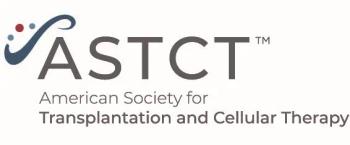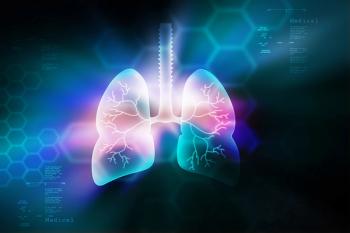
- ONCOLOGY Vol 15 No 1
- Volume 15
- Issue 1
Commentary (Wakoff/Porter): The Biology and Treatment of Chronic Myelogenous Leukemia
Over the past 2 decades, our understanding of the pathobiological events underlying chronic myelogenous leukemia (CML) has grown. At the same time, effective transplant and nontransplant treatment approaches to
Drs. Brunstein and McGlave present an outstanding review of the biology and treatment of chronic myelogenous leukemia (CML). Among hematologic malignancies, CML is unique in that it is consistently responsive to biological therapy. Furthermore, CML is a disease that highlights how an understanding of the basic biology of malignancy can translate into effective clinical therapy. The dramatic and rapid changes in our understanding of the biology of CML are best viewed with a historical perspective. Using this framework, we can trace the evolution of CML treatment and demonstrate how our new knowledge has led to the ability to cure this once uniformly fatal disease.
Chronic myelogenous leukemia has been a model for cancer biology since Nowell and Hungerford’s original description in 1960 of a "minute" chromosome in CML cells.[1] This was the first consistent genetic abnormality to be linked to a specific tumor. In 1973, this "Philadelphia chromosome" was shown to be a shortened chromosome 22, the result of a balanced translocation between the long arms of chromosomes 9 and 22.[2] By the early 1980s, it was known that this translocation resulted in the fusion of BCR and c-ABL, forming a chimeric BCR/ABL transcript.[3] The BCR/ABL gene encodes a constitutively activated tyrosine kinase capable of transforming hematopoietic cells in vitro[4] and inducing CML in animal models.[5] These discoveries laid the groundwork for an entire field of cancer biology.
Allogeneic Stem Cell Transplantation
Despite the many advances in therapy outlined in this review, allogeneic stem cell transplantation remains the only known curative therapy for CML. Drs. Brunstein and McGlave discuss the role of allogeneic stem cell transplantation, but perhaps understate the contribution of the immunologic graft-vs-leukemia (GVL) effect. The donor graft itself provides a potent antileukemic reaction, independent of the conditioning regimen. Initially, evidence of clinical GVL activity was indirect and included several observations: (1) a graft-vs-host disease (GVHD) flare could induce remission in relapsed patients, (2) GVHD was protective against relapse, and (3) syngeneic marrow grafting markedly increased relapse rates in patients with CML.[6]
Graft-vs-leukemia activity is mediated at least in part by donor T cells. In CML, relapse rates increase from approximately 10% after unmanipulated marrow transplantation to over 50% when donor grafts are depleted of T cells to prevent GVHD.[6] Clearly, allogeneic stem cell transplantation represents an effective method of immunotherapy and is not simply a mechanism by which to administer higher doses of chemotherapy and radiation.
The first direct evidence of GVL induction in the clinical setting came with the use of donor leukocyte infusions to treat relapsed leukemia after allogeneic stem cell transplantation.[7] Donor leukocyte infusion reestablishes complete remissions in over 60% of patients with chronic-phase CML. Furthermore, with a median follow-up of well over 3 years, more than 60% of patients enjoy sustained remissions after donor leukocyte infusion.[8] The use of donor leukocyte infusion confirmed that allogeneic immunotherapy was extremely potent against CML and suggested that the contribution of the conditioning regimen to successful allogeneic stem cell transplantation in CML was perhaps overestimated.
This has led to trials using nonmyeloablative, immunosuppressive therapy followed by allogeneic stem cell transplantation in order to minimize conditioning regimen toxicity and maximize GVL activity. Several reports now suggest that this approach may be feasible for some patients with a variety of malignancies, including CML.[9,10] This represents a new paradigm in allogeneic transplantation whereby it may be possible (and preferable) to use less, rather than more, cytotoxic therapy. No doubt, future reports will continue to explore the potential of nonmyeloablative allogeneic cell therapy.
STI-571
The development of STI-571 heralds another "first" in oncology: the rational design of targeted drug therapy at the molecular level. STI-571 inhibits the BCR/ABL tyrosine kinase, blocking the growth of CML cells in vitro[11] and eliminating CML in mice.[12] Preliminary clinical data show that hematologic responses are almost universal and cytogenetic responses are common[13]; however, the durability of these responses will require additional follow-up. Nevertheless, the clinical application of this drug begins to close the circle that started with the earliest observation of an abnormal chromosome in CML cells, and has now led to therapy aimed at specific molecular targets.
Choosing Optimal Therapy
Drs. Brunstein and McGlave review the controversies surrounding the optimal choice of therapy for patients newly diagnosed with CML; their guidelines provide a reasonable approach to this challenging dilemma. Although there are many new effective treatment options, allogeneic stem cell transplantation is still our only chance for cure.
The timing of a transplant requires a particularly complex decision. On the one hand, most patients can anticipate several years of progression-free survival with good quality of life; on the other, stem cell transplantation is most effective when performed (1) within 1 year of diagnosis, (2) in younger patients, and (3) before progression of disease.
Figure 2 in the article by Drs. Brunstein and McGlave provides an excellent illustration of these concerns. Survival curves comparing stem cell transplantation to hydroxyurea (Hydrea) or interferon favor the nontransplant group for approximately 3 years after diagnosis, primarily because of the high treatment-related mortality associated with transplants. However, long-term survival is highest in the transplant group. Therefore, in a young patient with a matched sibling donor, early transplantation, within the first year of diagnosis, provides the greatest chance of cure. Ultimately, decision analysis will also have to consider less tangible factors such as quality of life, societal costs, and potential new therapies still in development (eg, CML-specific vaccines and the generation of tumor-specific immunity).[14,15]
Expanding the Donor Pool
Since approximately half of CML patients are under 50 years old, and only one-third will have a matched sibling, increasing the donor pool is a major goal for allogeneic cell therapy. Unrelated-donor stem cell transplantation is an important and effective option for patients who are under age 50 and have a suitable match. This therapy greatly increases the number of patients who can be offered potentially curative therapy. Dr. McGlave and his group have been leaders in the use of unrelated-donor stem cell transplantation for CML, and recent updates demonstrate that cure rates close to 60% can be anticipated (similar to results obtained with matched sibling marrow grafting).[16] Furthermore, unrelated-donor stem cell transplantation within the first year after diagnosis maximizes quality-adjusted, disease-free survival.[17]
Conclusions
Drs. Brunstein and McGlave provide a thorough discussion of CML, from its basic biology to the many treatment options. Chronic myelogenous leukemia is the first cancer in which an understanding of the molecular basis of the disease has led to new and effective treatment options. Furthermore, the use of allogeneic immunotherapy to treat CML demonstrates that it is now possible to harness the human immune system for clinical benefit. Undoubtedly, the lessons learned from the biology and treatment of CML will be applicable in other areas of cancer therapy.
References:
1. Nowell PC, Hungerford DA: A minute chromosome in human chronic granulocytic leukemia. Science 132:1497, 1960.
2. Rowley JD: Letter: A new consistent chromosomal abnormality in chronic myelogenous leukaemia identified by quinacrine fluorescence and Giemsa staining. Nature 243:290-293, 1973.
3. Kurzrock R, Gutterman JU, Talpaz M: The molecular genetics of Philadelphia chromosome-positive leukemias. N Engl J Med 319:990-998, 1988.
4. McLaughlin J, Chianese E, Witte ON: In vitro transformation of immature hematopoietic cells by the P210 bcr/abl oncogene product of the Philadelphia chromosome. Proc Natl Acad Sci U S A 84:6558-6562, 1987.
5. Daley GQ, Van Etten RA, Baltimore D: Induction of chronic myelogenous leukemia in mice by the P210 bcr/abl gene of the Philadelphia chromosome. Science 247:824-830, 1990.
6. Horowitz MM, Gale RP, Sondel PM, et al: Graft-vs-leukemia reactions after bone marrow transplantation. Blood 75:555-562, 1990.
7. Kolb HJ, Mittermuller J, Clemm C, et al: Donor leukocyte transfusions for treatment of recurrent chronic myelogenous leukemia in marrow transplant patients. Blood 76:2462-2465, 1990.
8. Porter DL, Collins RH Jr, Shpilberg O, et al: Long-term follow-up of patients who achieved complete remission after donor leukocyte infusions. Biol Blood Marrow Transplant 5:253-261, 1999.
9. Slavin S, Nagler A, Naparstek E, et al: Nonmyeloablative stem-cell transplantation and cell therapy as an alternative to conventional bone marrow transplantation with lethal cytoreduction for the treatment of malignant and nonmalignant hematologic diseases. Blood 91:756-763, 1998.
10. Champlin R, Khouri I, Komblau S, et al: Reinventing bone marrow transplantation. Nonmyeloablative preparative regimens and induction of graft-vs-malignancy effect. Oncology 13:621-628; discussion 631, 635-638, 641, 1999.
11. Druker BJ, Tamura S, Buchdunger E, et al: Effects of a selective inhibitor of the Abl tyrosine kinase on the growth of bcr-abl positive cells. Nat Med 2:561-566, 1996.
12. Le Coutre P, Mologni L, Cleris L, et al: In vivo eradication of human bcr/abl-positive leukemia cells with an Abl kinase inhibitor [see comments]. J Natl Cancer Inst 91:163-168, 1999.
13. Druker BJ, Talpaz M, Resta D, et al: Clinical efficacy and safety of an Abl specific tyrosine kinase inhibitor as targeted therapy for chronic myelogenous leukemia. Blood 94:368a, 1999.
14. Choudhury A, Gajewski JL, Liang JC, et al: Use of leukemic dendritic cells for the generation of antileukemic cellular cytotoxicity against Philadelphia chromosome-positive chronic myelogenous leukemia. Blood 89:1133-1142, 1997.
15. Bocchia M, Korontsvit T, Xu Q, et al: Specific human cellular immunity to bcr-abl oncogene-derived peptides. Blood 87:3587-3592, 1996.
16. McGlave PB, Shu XO, Wen W, et al: Unrelated donor marrow transplantation for chronic myelogenous leukemia: 9 years’ experience of the national marrow donor program. Blood 95:2219-2225, 2000.
17. Lee SJ, Kuntz KM, Horowitz MM, et al: Unrelated donor bone marrow transplantation for chronic myelogenous leukemia: A decision analysis. Ann Intern Med 127:1080-1088, 1997.
Articles in this issue
almost 25 years ago
Perspectives on the Use of Fluorinated Pyrimidinesalmost 25 years ago
Nursing Strategies for Patients on Oral Chemotherapyalmost 25 years ago
Capecitabine in Colorectal Canceralmost 25 years ago
UFT in the Treatment of Colorectal and Breast Canceralmost 25 years ago
Clinical Status of Capecitabine in the Treatment of Breast Canceralmost 25 years ago
Patient Selection for Oral Chemotherapyalmost 25 years ago
Other Fluorinated Pyrimidines in the Treatment of Solid TumorsNewsletter
Stay up to date on recent advances in the multidisciplinary approach to cancer.


















































































